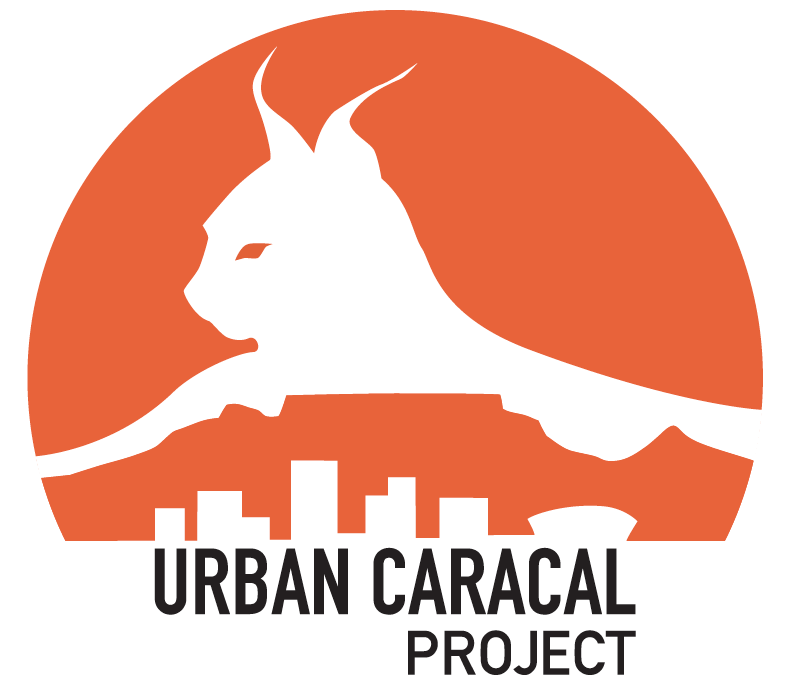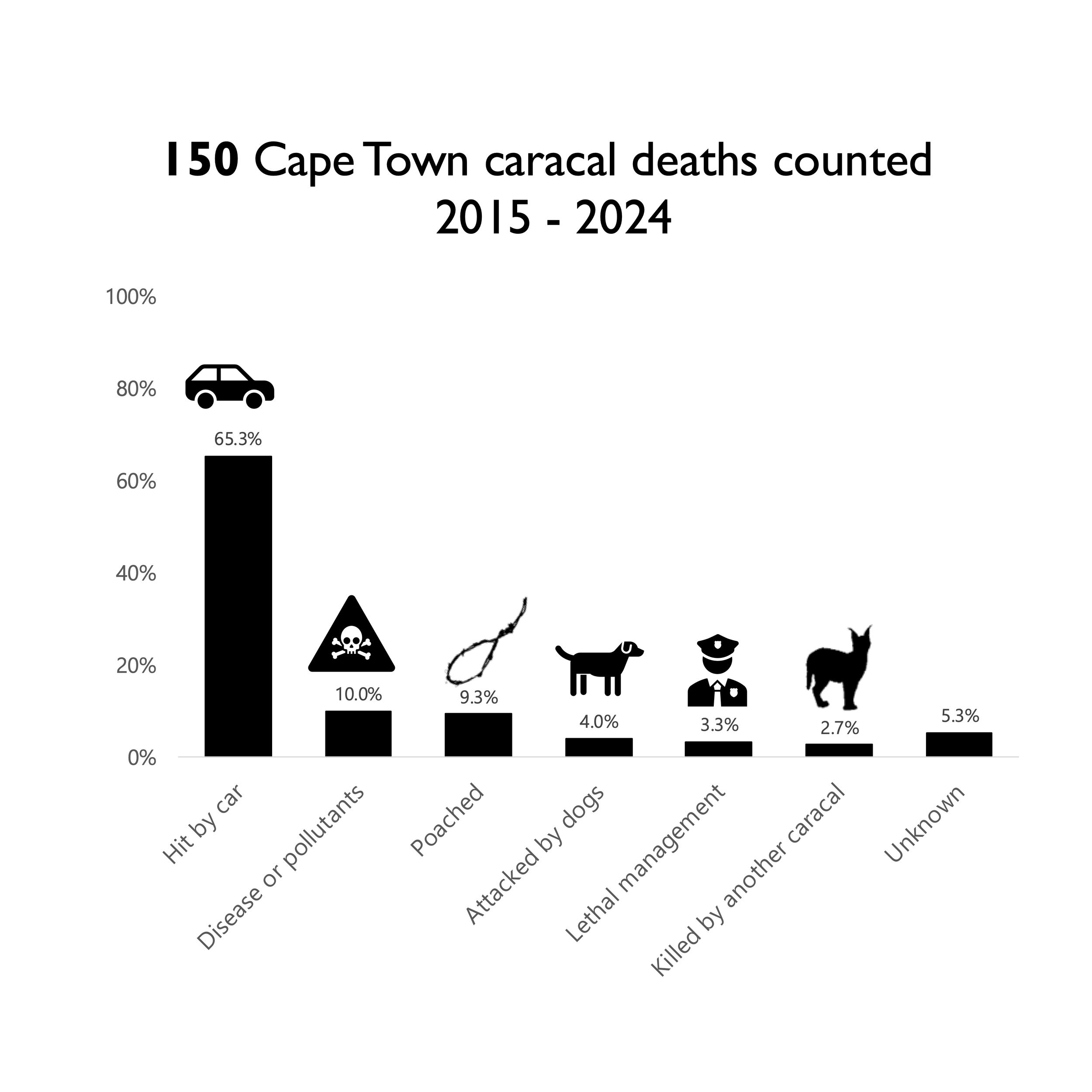This graph represents data collected from the Cape Peninsula and areas in and around Cape Town.
Navigating an urban environment presents a variety of unique challenges to wildlife, especially for animals with large home ranges like caracals. Here we present data we have collected after five years of recording and performing post-mortems on caracals that we found ourselves, or after they are reported to us by local community members. We collect the bodies of caracals that die in the Cape Peninsula, but also in and around other parts of Cape Town and it’s suburbs, including northern suburbs and as far north as West Coast National Park, and eastern suburbs and Stellenbosch. Undoubtedly our data are biased towards vehicle mortalities, as those are the easiest to see and find. There are likely many more deaths than we collect data on, particularly for caracals killed by disease, pesticides, poaching, and even caracals killing other caracals.
Caracal in Kommetjie. Photo credit: Luke Wilson
Vehicle collisions: By far, the leading source of mortality that we have measured are vehicle collisions, although finding caracals hit by cars is far easier than finding caracals that have died of other causes. However, even amongst caracals that were GPS collared (representing an unbiased dataset), vehicle collision was also the leading source of mortality. Interestingly, more males are killed by cars than females, although given the frequency that males cross roads (because of their very large territories), this finding is not surprising. However, 42% of all vehicle mortalities are juvenile males, which is 64% more juvenile male cases than adult male cases (26% of vehicle mortalities).
Roadkill hotspots for caracals hit by cars in the Cape Peninsula
The chain of poisons: detrimental effects of anticoagulant rat poison use.
One of the classes of pesticides of great concern to our wildlife populations, as well as predatory species worldwide, are anticoagulant rodenticides. We are particularly interested in this poison because of our research focused on wild carnivore populations, and the poisons of greatest prevalence in predators worldwide and with potential detrimental, population-level effects, seem to be anticoagulant rodenticides.
Rodents exposed to rat poisons take up to 10 days to die. In the meantime, they become easy prey for a variety of predatory species. In a process known as biomagnification, top order predators experience a huge buildup of toxins in their system, and eventually, they can also perish. With every poisoned rat they consume, the more the poison builds in their system. The higher up on the "food chain" the predator, the easier it is for poisons to become concentrated in their system.
Based on a successful research and bobcat conservation project that examined the breadth and reach of these poisons on bobcats (another wild cat species) in Los Angeles, California, USA (conducted by Urban Caracal Project coordinator, Dr. Laurel Serieys), we felt we should investigate the potential impacts of these same poisons on wildlife in the Cape Peninsula. We have conducted the first-ever testing for wildlife exposure to anticoagulant rat poisons in South Africa, and found evidence of exposure in a caracal and a genet!
Our findings indicate that caracals, and likely many other predatory species, are exposed to commonly used rat poisons, including the most toxic ones commercially available. The route of exposure is likely from consuming rodents that are targeted by the poisons in urban areas. Based on Dr. Serieys’ research in California on other carnivore species, the presence of these poisons in local carnivores suggests that chronic exposure may occur and because of frequent exposure, the poisons may threaten the survival of local wildlife in the Peninsula.
Road crossings and collisions.
Using GPS points from collared cats, we are able to see when they cross roads. We've found that they frequently cross urban roads, which correlates with incidents of vehicular collisions. In one year alone, we collected 20 caracals that fell victim to roadkill in the Cape Peninsula - and these were only cats that had been reported. What this means is that the actual number of car-related fatalities is likely much higher than we realize.







